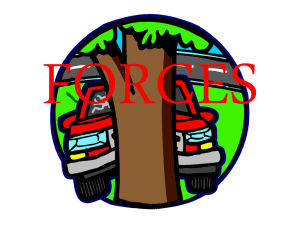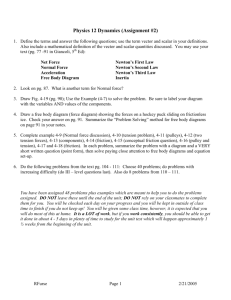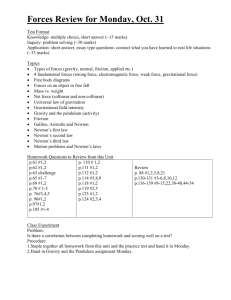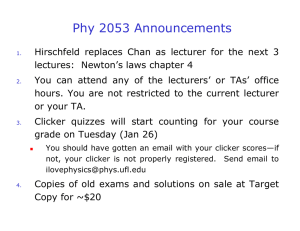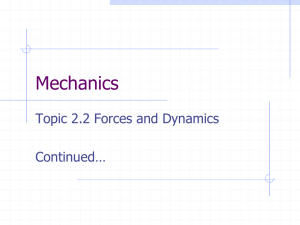Wentzville School District Curriculum Development Template Stage
advertisement
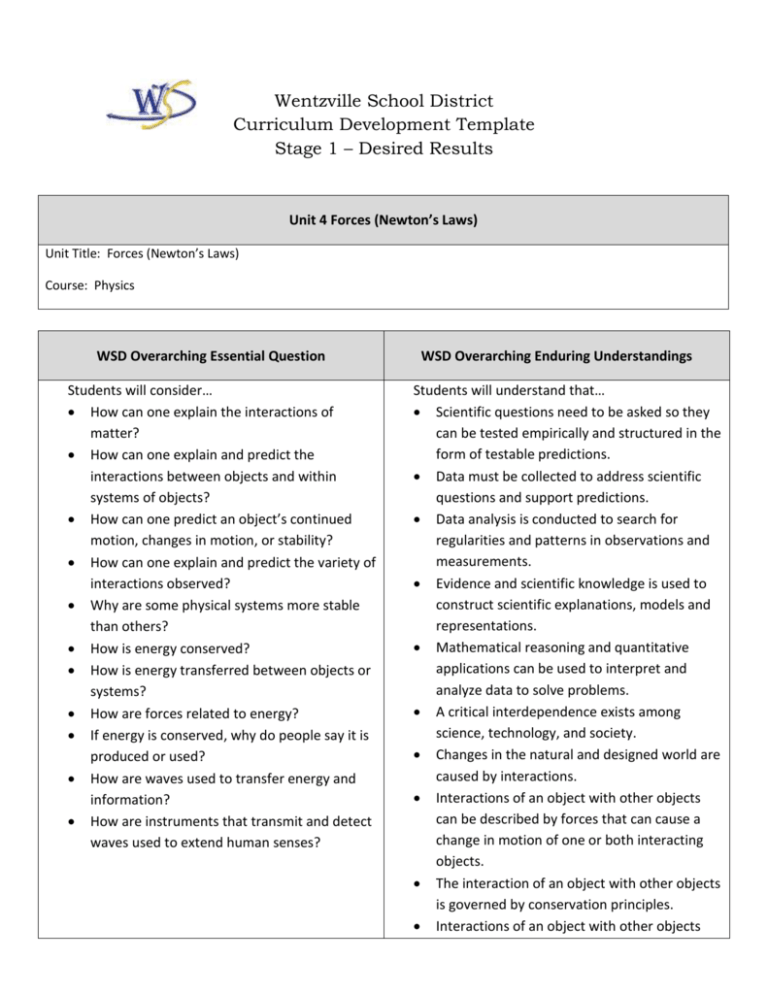
Wentzville School District Curriculum Development Template Stage 1 – Desired Results Unit 4 Forces (Newton’s Laws) Unit Title: Forces (Newton’s Laws) Course: Physics WSD Overarching Essential Question Students will consider… How can one explain the interactions of matter? How can one explain and predict the interactions between objects and within systems of objects? How can one predict an object’s continued motion, changes in motion, or stability? How can one explain and predict the variety of interactions observed? Why are some physical systems more stable than others? How is energy conserved? How is energy transferred between objects or systems? How are forces related to energy? If energy is conserved, why do people say it is produced or used? How are waves used to transfer energy and information? How are instruments that transmit and detect waves used to extend human senses? WSD Overarching Enduring Understandings Students will understand that… Scientific questions need to be asked so they can be tested empirically and structured in the form of testable predictions. Data must be collected to address scientific questions and support predictions. Data analysis is conducted to search for regularities and patterns in observations and measurements. Evidence and scientific knowledge is used to construct scientific explanations, models and representations. Mathematical reasoning and quantitative applications can be used to interpret and analyze data to solve problems. A critical interdependence exists among science, technology, and society. Changes in the natural and designed world are caused by interactions. Interactions of an object with other objects can be described by forces that can cause a change in motion of one or both interacting objects. The interaction of an object with other objects is governed by conservation principles. Interactions of an object with other objects can be described and explained by using the concept of the transfer of energy. Attractive and repulsive interactions at a distance can be described using the concept of fields. Transfer Transfer Goal Students will be able to independently use their learning to… Use given information about a real-world problem or situation in order to determine other information about the problem or situation. Use critical reading skills to analyze written statements of problems for what is given and what is being asked. Draw a picture or sketch of a problem or situation to help visualize real-world contexts. Meaning Essential Questions Understandings Students will consider… Students will understand that… What do the laws of physics suggest about wearing a seat-belt in a vehicle? When is friction helpful? When is friction harmful? How does the floor support you? If a horse applies a forward force to a cart and the cart applies an equal and opposite force to the horse, how does the cart ever get anywhere? Acquisition An object in motion tends to stay in motion unless acted upon by a net external force (An object at rest tends to stay at rest unless acted upon a net external force.) For every action force there is an equal and opposite reaction force. A net force causes acceleration. Mass (inertia) represents resistance to acceleration. Key Knowledge Key Skills Students will know… Forces are vectors Contact forces Field forces Newton’s 3 Laws of Motion Friction Normal Force Inertia The difference between mass and weight Students will be able to… Draw free-body diagrams. Solve problems using Newton’s 3 Laws of Motion. Relate everyday experiences to Newton’s 3 Laws of Motion. Set up and solve systems of equations to model problems involving Newton’s 2nd law.



